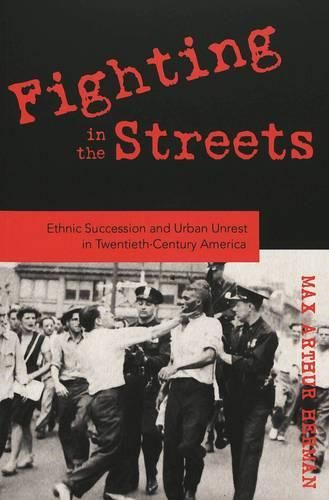Readings Newsletter
Become a Readings Member to make your shopping experience even easier.
Sign in or sign up for free!
You’re not far away from qualifying for FREE standard shipping within Australia
You’ve qualified for FREE standard shipping within Australia
The cart is loading…






Fighting in the Streets provides a comparative analysis of some of the most severe episodes of urban unrest that took place in twentieth-century America, including the 1919 Chicago Riot, the Detroit Riot of 1943, the Newark and Detroit Riots of 1967, the Miami Riot of 1980, and the 1992 Los Angeles Riot. Examining the patterns of death and destruction of property that occurred during these events, as well as historical evidence regarding struggles for housing, jobs, and political power among members of different racial/ethnic groups, this book makes the case for a general explanatory model of urban unrest as a product of rapid demographic change. Focusing at the neighborhood level, where demographic changes have their greatest impact, Fighting in the Streets posits that riot-related violence is most likely to take place in neighborhoods characterized by high levels of black/white segregation, poverty, unemployment, and rapid population turnover. Such a profile of the riot-prone neighborhood may enable policy makers to avert future violence through targeted economic and political intervention, building community institutions that integrate newcomers and natives. This book is particularly suited for classes in urban studies, race/ethnic relations, and collective behavior/social movements as well as public policy and planning.
$9.00 standard shipping within Australia
FREE standard shipping within Australia for orders over $100.00
Express & International shipping calculated at checkout
Fighting in the Streets provides a comparative analysis of some of the most severe episodes of urban unrest that took place in twentieth-century America, including the 1919 Chicago Riot, the Detroit Riot of 1943, the Newark and Detroit Riots of 1967, the Miami Riot of 1980, and the 1992 Los Angeles Riot. Examining the patterns of death and destruction of property that occurred during these events, as well as historical evidence regarding struggles for housing, jobs, and political power among members of different racial/ethnic groups, this book makes the case for a general explanatory model of urban unrest as a product of rapid demographic change. Focusing at the neighborhood level, where demographic changes have their greatest impact, Fighting in the Streets posits that riot-related violence is most likely to take place in neighborhoods characterized by high levels of black/white segregation, poverty, unemployment, and rapid population turnover. Such a profile of the riot-prone neighborhood may enable policy makers to avert future violence through targeted economic and political intervention, building community institutions that integrate newcomers and natives. This book is particularly suited for classes in urban studies, race/ethnic relations, and collective behavior/social movements as well as public policy and planning.